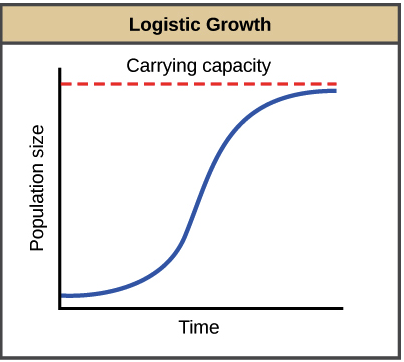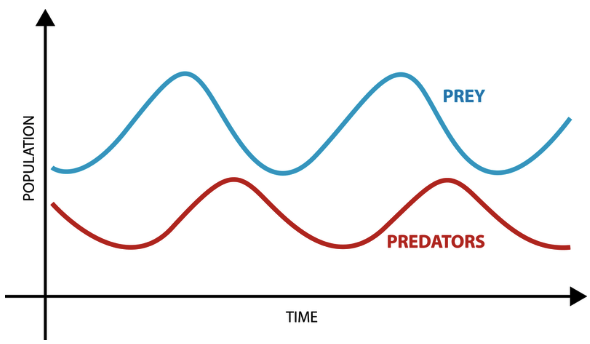Which of the Following Is a Density Independent Regulatory Factor
However density independent factors are often confused density dependent factors for a number of reasons. It will cause the per capita growth rate to change.

Difference Between Density Independent And Density Dependent Limiting Factors Compare The Difference Between Similar Terms
In addition to variables that influence birth and death rates such as abiotic factors and environmental factors such as severe weather or fire density-independent regulation can be influenced by factors that.

. An unusually early fall frost. Density-independent factor Any factor limiting the size of a population whose effect is not dependent on the number of individuals in the population. Population growth rate based on birth and death rates.
The most common factor that affects birth and death rates within a population independently of density is Fire Competition Weather Stress None of these is correct. There are many common density independent factors such as temperature natural disasters and the level of oxygen in the atmosphere. These factors are usually physical factors of the environment like.
Each of the following is a density-dependent limiting factor EXCEPT competition - 786903 DEUFG DEUFG 29072017 Biology Junior High School answered Each of the following is a density-dependent limiting factor EXCEPT competition A. Exponential and logistic growth in populations. For example for most organisms that breathe oxygen oxygen availability is a density-independent factor.
Is a density independent regulatory factor. If oxygen concentrations decline or breathable oxygen is suddenly made density-independent factor also called limiting factor in ecology any force that affects the size of a population of living things regardless of the density of the population the number of. An example of such a factor is an earthquake which will kill all members of the population regardless of whether the population is small or large.
Its effect does not dependent upon the density of the population. We review their content and use your feedback to keep the quality high. Which of the following is a density-dependent factor in the regulation of population growth.
Many factors typically physical or chemical in nature abiotic influence the mortality of a population regardless of its density including weather natural disasters and pollution. Density-dependent limiting factors impact populations more as populations increase in density. Density-dependent factors often arise from biological phenomena rather than from physical and chemical phenomena.
An example of such a factor is an earthquake which will kill all members of the population regardless of whether the population is small or large. Density-independent factors typically are non-living things that impact a population such as when the temperature outside falls due to a cold front moving through or when pollution reduced air. B A population will initially increase exponentially and then level off as it approaches the carrying capacity of the environment.
Density-Independent Regulation and Interaction With Density-Dependent Factors. In the carrying capacity of the environment would have what effect on the size of an r-selected population regulated by density-independent factors. Who are the experts.
First density independent factors for one. Suitable answers include a number of abiotic factors. It is an abiotic non-living component of the ecosystem.
Experts are tested by Chegg as specialists in their subject area. These factors apply to all individuals in a population regardless of the density. Small populations are particularly at risk of being wiped out by density independent limiting factors.
An individual deer may be killed in a forest fire regardless of how many deer happen to be in that area. However limiting factors may also increase a population ClassificationOfLimiting Factors Limiting factors can be divided into two classes as follows---- 1 Density independent factors 2 Density dependent factors DENSITY INDEPENDENT FACTORS Factors that limit population size regardless of population density. Competition for resources is a density-independent factor affecting a population.
Which of the following is a density-independent limiting factor. This is the currently selected item. C Future population growth cannot be predicted mathematically.
Therefore III only floods and drought is an example of density-independent factor. The most obvious answer and the most commonly important abiotic factor is a temperature extreme eg freezing. Exponential logistic growth.
Density-dependent factor also called regulating factor in ecology any force that affects the size of a population of living things in response to the density of the population the number of individuals per unit area. Temperature is a density independent factor because the temperature of an area can vary. Mean age of the population.
The category of density independent limiting factors includes fires natural disasters earthquakes floods tornados and the effects of pollution. Density-independent factors are those factors that are not dependent on the density of the population to affect them. What factors limit population sizes.
A Population growth is limited by density-dependent factors. 1 See answer Advertisement Advertisement SUPERABBY. Google Classroom Facebook Twitter.
False The influence of density-independent factors on populations is generally less predictable than the influence of density-dependent factors. Soobee72pl and 8 more users found this answer helpful. Which of the following is not a statement of the logistic growth model.
Predation flooding annual rainfall mean temperature of the area earthquake The environmental impact EI of a population is a function of population size and. Density independent limiting factors cause abrupt and erratic shifts in population size. Density-independent factor Any factor limiting the size of a population whose effect is not dependent on the number of individuals in the population.
These are usually abiotic factors. Which of the following is not a density-dependent factor limiting a populations growth. This is because population density is greatest at point 3.

Population Regulation Density Dependent Factors Ecology Article Khan Academy

Population Regulation Density Dependent Factors Ecology Article Khan Academy
No comments for "Which of the Following Is a Density Independent Regulatory Factor"
Post a Comment